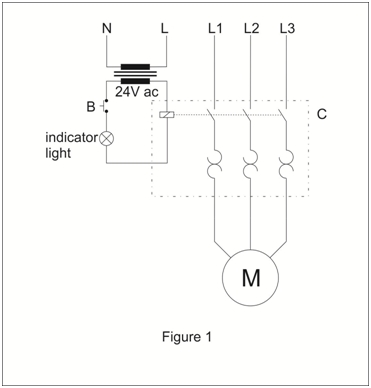Home › Electrical Engineering Forum › General Discussion › Contactors and Electric Control Panels
- This topic has 0 replies, 1 voice, and was last updated 10 years, 6 months ago by
admin.
-
AuthorPosts
-
2014/07/28 at 2:23 pm #11179
admin
KeymasterAndrei is one of our newly members who likes to send us articles. This time, read his essay and feel free to comment.
There is often the situation when an operator needs to turn on or off a piece of machinery which presents a high load on the electrical circuit. Some examples could include big pool pumps, industrial lathe machines or heavy hangar automatic doors.
To switch on such high currents is not an easy task and this is where contactors come into play. These are high current Normally Open relays with protection against arcs and designed for specific applications. Contactors can have many poles in order to control many loads from the same switch or to control 3 phase circuits.
Like any relay the contactor will have a coil that when energized will close the circuit shunting the contacts. Depending on contactor the energizing voltage will differ and can be DC or AC. It is important to note that most contactors don’t offer over-current protection. The ones that incorporate such protection are usually referred to as motor starters.
Figure 1 shows a schematic of a circuit used to switch on a motor. The elements incorporated in the dash and dot rectangle are part of the motor starter. The left side of the diagram represents the control circuit which in this case operates at 24V ac. Whenever the B button is pushed, contactor C is closed, M motor starts and indicator light turns on.As mentioned there are many types of contactors, each intended for a specific operation. Improper selection of the right contactor is the most common cause of its failure.
Besides selecting the proper current rating you need to know what kind of equipment you will be controlling. An inductive motor behaves very differently during transient period than an incandescent lamp even if they have the same power rating.
You can use the table below, or the IEC 947-1 standard to help you select the proper contactor for your application.
Conclusion
In conclusion whenever you will have to switch on and off heavy loads you will need to use contactors. They are also often found in automation systems, offering the possibility to safety control a piece of machinery from remote locations or from devices that normally could not carry such high current.
Thanks for reading my essay. Anything to add?
Andrei.
-
AuthorPosts
- You must be logged in to reply to this topic.
